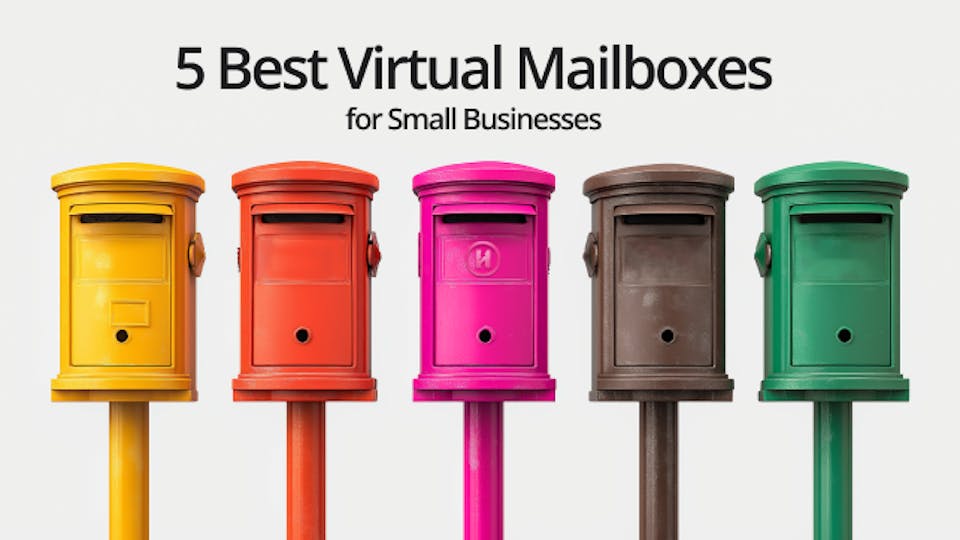16 June, 2016
9 tips for starting your business on a shoestring budget!
Table of Contents
It’s one of the most exciting things you can do to start your own business! The prospect of “being your own boss” can be enthralling if not fill you with a great sense of freedom! But don’t make the mistake of thinking it’s gonna be easy… If you’ve been providing a particular service or product as an employee you’re going to go from being an important part of the larger machine to being the person who runs the whole machine. Now you’ve not only got to provide the service (whether that’s selling widgets or designing apps) you’ll have to be the business leader, the manager and the technician all rolled into one. And even if you’ve got enough budget for employee #1 or to take on a freelancer or two, you’ll still be responsible for the lot… The buck, as they say, stops with you!
So with that gentle warning in mind we want you to have the highest chance of succeeding… And resource allocation is going to be key to whether sink or swim. It’s not all about money though. The right allocation of existing skills needs careful thought, you’ll need to figure out what you are best at and in light of the larger picture (you’re the boss now not just a technician), where your skills best serve the business.
We know that not having enough cash is one of the common excuses to put off starting a business. But you don’t need to let lack of funds stop you from starting. You do however need to be super careful about how you use what little you have.
1. Focus your skills – What do you do best?
Think about starting your business based on your existing skillset and knowledge base. We know it can be an appealing idea to venture into the unknown but there are big advantages to starting out in a field that you already know really well.
Firstly, as you know your industry, you won’t need to spend what little cash you have on consultancy fees and other advisors.
Secondly, because you are intimately aware and knowledgeable of the industry you intend to operate in, there’ll be no need to invest your time, money, and effort gaining new skills. It’s likely that in the early stages you’ll be wearing many hats (perhaps all of them to start) and it’s possible you’ll need to understand parts of running a business that haven’t been your concern before, such as accountancy or marketing. But if you’re trying to learn the skill of business operations as well as starting your business in a field you have no experience of, you’re stacking the cards against yourself!
Do you really know what’s needed in each area of the business you intend to start and if not, do you really have the money to spend on hiring the right people. If you can say yes, that’s great but if you’re on a very tight shoestring, the less you rely on external support in the early stages of your business, the lower your startup costs will be and so the more you already know about your industry the better.
2. Focus your attention
If someone asked you the question, “What will be the key to your business’s success?” what would you say? “The quality or our widget!” OR “The bottom line!”.
Think about it, possibly for the first time you are now responsible for the business itself, this means that your business must:
1) Have enough money to pay for all the elements that are involved in making and selling your widget or providing your service
AND
2) Pay you (and any staff) enough money to be able to go home and put food on the table.
And the only thing that will bring revenue in (excluding a welcome round of funding) is sales. And the only way you’re going to get to a sale is from converting a lead. So it stands to reason, that when you’re starting out, you MUST focus on finding leads and converting them to sales.
3. Be savvy when hiring.
There’s a wealth of online, offline & virtual assistance these days, from folk that will run physical errands for you (like Task Rabbit) to Posh, where you’ll have a real person answer all your calls, take messages and pass on to you the people you really want to speak to.
If outsourcing some of your functions is essential then a virtual assistant might be the most cost-effective way to do it. A virtual assistant can potentially cover all sorts of tasks including accounting, research, social tasks, data entry, diary keeping and in our case act as your company receptionist. It’s also a safer bet knowing that you can scale up or down your virtual workforce as and when you need it.
If you’re not sure where to start here’s a few of our favourites, who provide access to a virtual workforce of various types. For simpler tasks it’s worth checking out FiveSquids, People Per Hour and Fiverr. If you’re looking for a developer or designer for a project you’ll find more senior professionals who work on a remote, per project basis via sites like UpWork & Toptal. Just make sure you always check their reviews in detail and if you can, do even deeper due diligence by checking their personal website and other social feeds to see previous work and what they are saying about their industry.
Finally, if you’re in need of some great advice on how to hire and set up a remote team, this FREE course from Mixergy and Alvaro Oliveira is a must see!
4. RENT THE BIGGEST OFFICE IN TOWN!!!
No. Don’t do that. Remember that idea about not wasting money on things you don’t need. If you don’t need an office… don’t waste your money on one! If you need to find a balance between workspace and cost, co-working is a great option (you can always get in touch with us when you need that). But if it’s better for you to work from home to start with, don’t try and convince yourself you need something else, when it’s really for vanity’s sake. However, if you do have a small team and need to work together on a project, a small serviced office is a good bet and there are plenty of options out there, including ours!
Don’t forget though, if you’re right at the start of your journey and working on a very limited budget, working from home will mean you don’t pay anything extra for your workspace (infact you’ll potentially be able to claim some of your rent as tax deductible), you won’t have to pay for commuting and you won’t waste valuable time in transit. And if you think working from home is beneath you, don’t forget Niklas Zennstrom spent a year building Skype out of the lounge of his flat where he and his wife lived!
5. Use the cloud, Luke.
It fills us with joy at just how good “free” online software is these days. You literally don’t have to spend a penny on software, with services from the likes of Google you can run almost the entire admin side of your business flawlessly and at almost no cost. In fact for email, word processing, spreadsheets and presentations, Google is all we use.
On top of that, if you are working with a remote team, having rock solid cloud storage is essential. Three of the biggest players here are Google, Amazon and Dropbox. Again costs can begin from zero and scale up as you need. This is a great thing to look out for when it comes to other digital services and software too, you can almost always get started with the thing you need at no or low cost and only pay for more when you need it. It’s one of the amazing advantages of the digital age!
6. Use DIY website builders or just don’t have a website!
“WHAAT?! Don’t have a website you say?”
Yes, that’s right, these days it’s not beyond reason to have a web presence that doesn’t require a traditional website at all. Obviously you still need to take care that you control your business identity and how it looks but you don’t have to spend big on hiring a web designer when something else will not only do but could quite easily do much more!
Take ClickFunnels for instance, they’ve built a service around the idea we talked about earlier, (ie. your number one goal is sales & leads). With ClickFunnels you design your ‘website’ using their wysiwyg editor (no need to pay for a designer and developer) and built into the package are a series of powerful sales funnels that take your website visitors (leads) through the optimum journey to reaching a sale and on top of that it will incorporate an email marketing system to keep your leads warm and your customers coming back for more!
But there are other even cheaper options and if you need a really simple service to get your site up and running, tools like Wix and Weebly are a great place to start. If you’re looking for something a little more stylish or fully featured and have some basic web design skills you could try out SquareSpace or WordPress. The main advantage you’ll have is that you won’t need a specialist web designer to get started.
Don’t be confused though, developing a genuinely professional website requires a good designer. Just remember that what you are trying to achieve here is sales and leads on a shoestring budget, so you site does not need to be “perfect” to start with it just needs to be good enough to get started. So while the the DIY solution might not be suitable for every business, don’t dismiss it or pretend you need a website with all the bells and whistles before you can make a sale!
7. Tap into your network
When it comes to converting a lead to a sale one of the strongest factors will be whether or not they have had your business recommended to them by someone they trust. And there’s never a better place to begin than your own network, whether that’s your existing business network or your friends & family. This may not be the route we leap to first but it is by far and away the cheapest source of really hot leads. Imagine if your friend raves about your service to one of their acquaintances, do you think that person is more or less likely to pay attention?
So, draw up a list of people you can contact and get started by sending some emails & making some calls. If you’re on social networks do a mixture of messaging friends directly and posting in your feeds. And don’t forget, you’re not trying to get a sale directly from your friends & contacts, it’s all about who they know who need what you have.
8. Use local media
Traditionally physical media was thought of as an expensive channel, only for those with big budgets, these days with the digital age revolutionising advertising, physical media outlets can be much cheaper, although still a considerable expense. However, when it comes to local media, there are plenty of publications looking for stories of interest. And if you build up your presence in local media outlets over time you’ll begin to create credibility that you can use to attract the attention of national media.
Think about everything from local radio stations and newspapers to a niche industry magazines. You’ll need to connect with as many media contacts as possible and always be prompt when you get a request to share your expertise with their audience. Ultimately if you do this consistently over the course of a year you’ll be in a strong position to be regarded as an authority in your field.
9. Use Social
Finally, we couldn’t do this guide on a shoestring without talking about social media. For basic brand ownership, make sure that you have your business signed up to all the big players – Twitter, Facebook, Instagram etc. But also, start to look at the other social channels too. For instance, what can you do with different types of video channels – Periscope, YouTube, Vimeo, Vine or Snapchat. You don’t have to try and manage all these different channels in one go, just make sure you sign up to all the major channels and then start to focus on one or two that make sense for your business, for instance you could just start with the good old trio of FaceBook, Twitter and YouTube, or maybe if live video feed is right for you, you could swap out YouTube for Periscope or LiveStream or Ustream. One of the absolutely fundamental questions you MUST ask yourself however is, “Where do my audience spend their time?” If you’re in a B2C sector with females aged 18-25 then FB, Pinterest and Instagram might be right for you. But if you’re attempting to sell C-suite services B2B then you’ll need to consider the fact that the people you want to do business with aren’t spending hours a day on various social media channels.
So there we have it, remember that sales and leads should be your top priority and that you should only spend your limited budget on the essential items that make your business function and nothing else (no fancy cars on credit!). Do this and you’ll build yourself a solid foundation on which your business can go from success to success.
Hand-picked related articles

London
Virtual Office
Mail Management
![Starting a Business While Employed in the UK [All Considerations]](https://images.prismic.io/hoxton-mix/ODg5YzBjODUtNTY3My00NDIxLWI1YWMtNTRlNWVlZTE5NTJm_eb77e98b-ff83-430a-aba0-3633c7944c11_running-your-own-business-while-still-employed.jpg?auto=compress%25format&rect=120%250%25720%25480&w=960&h=640)




